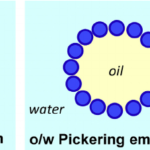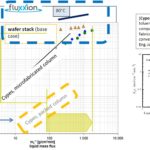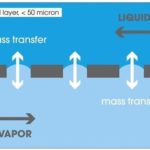In 2007, COSTELLO provided engineering services to the Microgy biogas plant in Stephenville, Texas. This plant was the largest plant in the United States to produce pipeline grade biomethane from dairy cow manure. The Microgy plant converted dairy cow manure and other organic matter into biogas using an anaerobic process. The bacteria were thermophilic. The biogas produced … [Read more...]
Ferrofluids as Catalysts in the Process Industries
This document connects three research subjects concerning ferrofluids, i.e. the synthesis and use of catalytic magnetic colloids, process intensification and ferrofluids in general. Ferrofluids are nano particles of magnetite suspended in an aqueous or oily based substrate. They are made from a mixture of FeCl2, FeCl3 and water. Co-precipitation occurs with the addition of … [Read more...]
Pickering-Emulsion Strategy for Separating & Recycling Nanoparticle Catalysts
Nanoparticle Catalysts Nanoparticle catalysts have extensive surface area/unit volume when compared to traditional catalysts. This property makes them ideal for use in process intensified reactors such as the Holl-Reactor®. The catalyst mass rate can be dramatically lowered and still achieve high production rates. A Classical Emulsion First we will talk about … [Read more...]
Fluxxion Metallic Membranes for Absorption, Stripping & Distillation – Part 2
In this second part of the series on the Fluxxion metallic membrane we are going to discuss two applications. Below we show the gas liquid interface that occurs at each pore. The following example demonstrates the stripping of Methyl Tert-Butyl Ether (MTBE) from water with the Fluxxion Metallic Membrane. Stripping of MTBE from Water The stripping MTBE from water by … [Read more...]
Fluxxion Metallic Membranes for Absorption, Stripping & Distillation – Part 1
Fluxxion Metallic Membranes can be used in place of packed columns. They are usually placed in stacks and have no moving parts. Industry needs new low energy separations with enhanced safety and increased flexibility. A membrane stack can have a 15 cm diameter and a thickness of 0.7 mm. There would be 5 billion identical pores on each membrane with a diameter of 0.45 … [Read more...]




